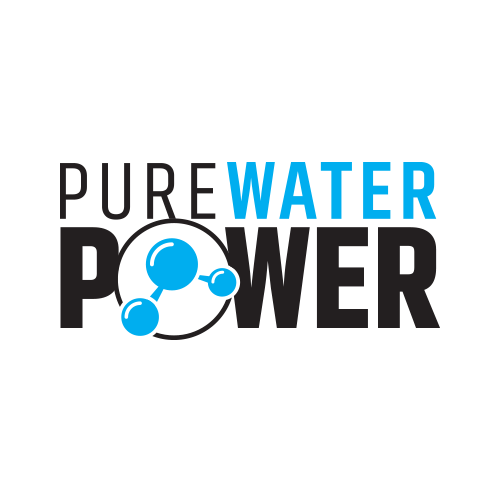I’m more curious as to why one would add a third type of pump to truck/trailer instead of just using the PW or turning off soap to the 12v and turning on water.
Well I sure don’t know lol. Maybe some booster pump people will chime in.
This is a booster pump. The most common used in the industry right now are the 3/4 HP and 1 HP.
(If anyone is serious about buying one, PM me and ill tell you where i found the lowest price)
Boosters and 12V’s are similar in function… although the boosters have more oomph, and have less issues than 12V’s, like priming and losing prime. Basically the reason i got one was because i kept having problems with my 12V running consistently and keeping prime… plus a bunch of heavy hitters who used to use 12V’s (Ray Burke, for one) switched to boosters and say they are way better, so i wanted to use what they do. He uses them on multi story commercial buildings all the time.
In function, you can plumb them just like a 12V. Run buffer tank and mix tank to the inlet with a 3 way valve (or whatever), and push it out to the reel. They run on 120V, and a lot of guys will use customers electricity (so free power), but most carry a generator on the trailer as a backup… and quite a few only use generator power to keep from running into any issues using a customers outlets. Personally i bought a $150 generator off craigslist, and have used it on all jobs just to prevent any issues with customers wiring. Nice to have the option to use their power, though, in case generator has a problem, or if its a house that i am confident has good wiring.
I have a 1HP and it works great. I never lose prime now, and i can hit 55 ft + (tested horizontally) with just a 1/2" hose and an 0040 tip. Go to 5/8" and it would go further… use an 8 ft pole or whatever… even more. As far as not running mix through them, you just have to get the stainless ones and rinse them… Ray says his last several years now, i believe.
Again, the biggest reason i got one was because i kept seeing guys that have been using 12V’s heavily for years switching to the boosters and saying they were better… so i assumed they were on to something. Just more flow, and more consistent operation, i believe.
I keep a 12V to use as a transfer pump, and backup. I think most guys do, and some might even interchange boosters and 12v’s on jobs… kinda like an xjet and downstream injector… all tools have their time and place.
Tireshark gave a good description above. I’ve seriously looked at and may add one next Spring. They offer more pressure, up to about 150-200psi and with the 1hp like he has you can get about 8gpm I believe. The guy who developed the proportioner only uses these for everything. Doesn’t even have a PW anymore.
However, a lot of guys running these still use a 12V for roof cleaning. The other big drawback is they cost a good bit more. They’re not a on-demand pump, so similar to a pw will build up heat quickly unless circulating. They have a circulation kit and now a flow switch to cut them on and off. So by the time you get all the goodies for them to really perform like you want you’re looking at $1500 approx.(my quote from pws when I did my new trailer build). So they are a step up for a pure softwash guy because they do offer decent rinse capability versus a 12v. It also does have the benefit of overcoming head pressure if you’re running a longer hose or at higher level (ie 3-4 stories) up better than 12v.
But despite some of their claims, it still doesn’t clean concrete or anything that needs some pressure like a PW and they still do have their issues tho maybe not quite as many as 12v. It’s just another tool for your arsenal. If I had one I’d still be DS with my pw 90% of the time. But I like engines. Trying figure out how to put a Borla on my pw, lol.
Great input Racer. Yeah some of the advice i got was that you need to tip it down when doing roofs, so that you aren’t using so much chemical. I got an adapter that screws on the end of a garden nozzle, that lets me put in whatever tip i want.
That new flow switch is nice, but expensive. I have a heavy duty remote im using that is significantly cheaper. PM me and i can let you know where i got it and my pump. I got the 1hp and remote for about $800 including shipping.
A 12 volt runs 5 to eight gallons at 60 to 100 psi depending on the unit. The fat boys and the like are diaphgrahm pumps and the northern tools is a centrifigual/impeller type.
The “booster pump” is basically goils submersible pump, but instead of a submersible motors they mounted it on a regular motor they use on the regular jet pumps… They have impeelars and defusers, 14 stages to gain more psi but less volume. Any ways the big problem is that all these impeller move because no one uses a bladder tank to absorb the shock, so since water does not compress it tears them up. Unless you have a nozzle large enough to keep the pump running continuously. Second big problem is they are not made for chemicals but people run chems through them anyways. The advantage is lift. At. 4 5 6 stories in the air your still getting 5 gpm where as with a 12 volt your lucky to get 4 gpm at 2 stories. In other words the booster pump will give you more lift as racer explained meaning you can work a little higher. The reason it rinses better is beacuse it has double the psi not more volume. Ever been in a shower with a 2gpm shower head and it seems to rinse you faster than the other shower with lots if water? That’s pressure… There are plenty of 120 volt centrifugal pumps that will give you more water at a little less psi for way less money…
Justin, Some good info. I never knew that about the metering valves.
What are they getting for that flow switch?
$450.
That’s ridiculous
Yep. I think that was the same thing i said when i found out.
With the way i have my remote and fake bypass line set up, not having the flow switch isn’t really a big deal, though.
Ball valve sizes for reference. I found a 1/2", 3/4", and 1" valve today and work and took some photos of them for visual comparison for everyone. The smaller 1/2" valve is identical to the 1/2" GF 523 metering valves everyone uses for metering, except its a regular ball with 90 degree rotation and not a v-groove ball with 180 degree rotation.
The 3/4" valve is missing one of its connection ends because I pulled it off a process line for the photo, that that’s why it looks shorter on one side, just fyi.
As you can see, the difference are pretty drastic.
1", 3/4", 1/2"
1", 3/4", 1/2"
1", 3/4", 1/2"
3/4", 1/2"
1", 3/4"
1", 1/2"
i think 3/4 is the way to go flow and price wise.
Just an update for everyone.
All the components and fittings for the first 1" metering system have officially been ordered. Hopefully all parts will arrive and be built in the next week or two and should be able to get up photos and the assembled product as well as some baseline flow measurements. Parts should be arriving this week for the 1/2" setup, so soon we could have some comparison data! It’s starting to come together finally.
Exciting!
Now this will be a Christmas present. Thanks @jzbreeland 
NICE! what check valves are you using in this test setup?
Obviously this will be better than 1/2", but it’s still a “prototype” so to speak because it hasn’t been tested. Because of this, the guy I’m building this one for didn’t want to spend the money on the diaphragm check valves right now. He’s going to provide his own basic check valves that aren’t corrosion resistant. That’ll work fine to begin with.
The check valves aren’t what restricts the flow. It’s the metering valve with v-groove that cause the restriction. So that’s the most important thing to test and compare with 1/2".
The beauty of this set up is that someone can replace or exchange any check valves they want or have available. Since none of this is proprietary or secret, and it’s all user serviceable, that gives people options.
totally understandable
I don’t have all the fittings in yet. There are some that will be here tomorrow and a few that come in Monday, but I have most everything else.
Just for fun, here is the difference between the 3/4" manifold fittings and the 1" manifold fittings. Also, the supply barbs are 1/2" and 1" for comparison.
The manifold that is partially fitted together with metering valves is for the 1/2" GF 523 metering valve system to mimic the proportioner, which has 1/2" supply and 3/4" outlet. I don’t have check valves for it yet, and I’m not sure if I’ll put any. I’m going to only be testing with water, and I don’t intend to use the 1/2" setup except for baseline testing, which will hopefully happen soon. Getting closer all the time. When I’m done with the 1/2" setup testing, I may put check valves on it and offer it for sale if anyone is still interested in a 1/2" system, but the whole idea here is to go bigger lol. So it’ll probably just sit around after testing. Anyway, that’s why no check valves.
Any thoughts or comments??
























